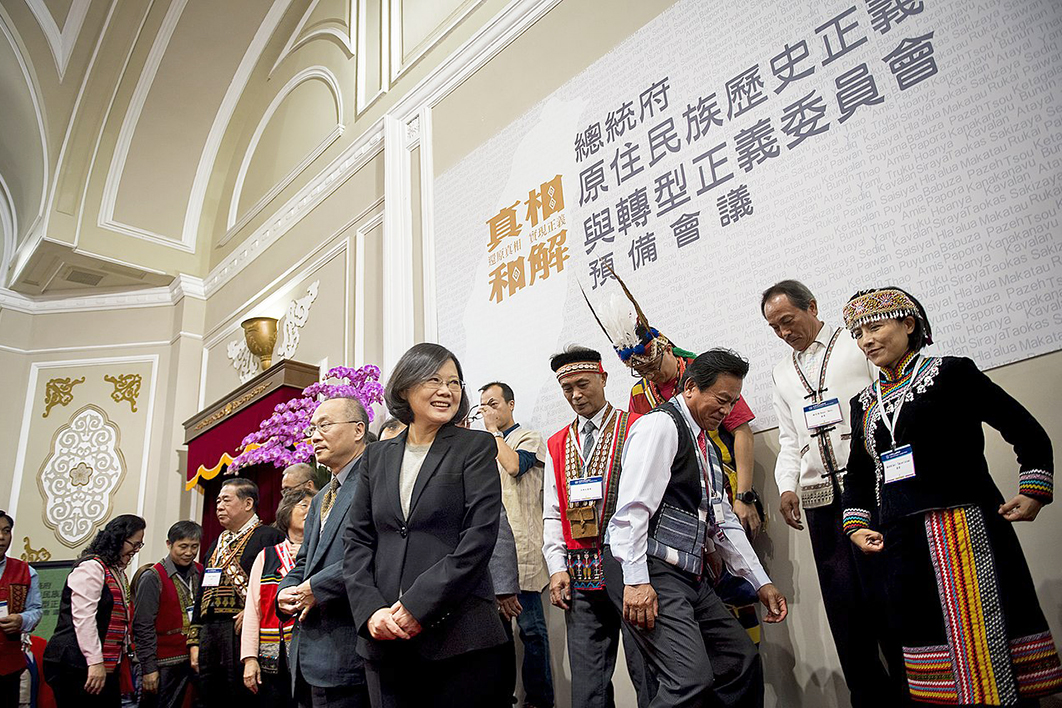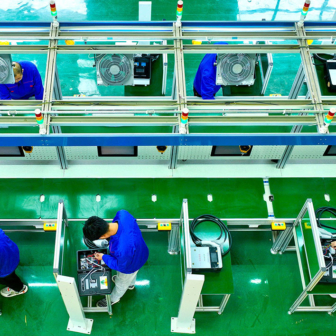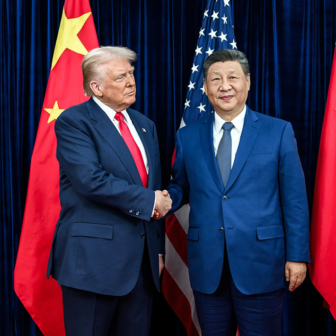Eight Australian parliamentarians flew into Taiwan this week, most of them for the first time. Two of the eight are senators from Tasmania and must be used to the idea of an island as a destination. But Taiwan is smaller than Tasmania and even more mountainous. On a clear day, this intensely green island looks from above like a giant green leaf floating in the sea.
The visual contrasts with Australia mask many similarities. Taiwan is a young democracy, but its robust institutions underpin a remarkably progressive society. Democratisation has fostered a degree of civic consciousness unknown in the decades of martial law between 1949 and 1987. Multicultural policy has allowed local cultures to flourish after decades of repression, fostering a strong sense of Taiwanese identity. A substantial body of law, still growing, protects and advances Indigenous rights to land, language maintenance and participation in government. A marriage equality bill was passed on constitutional grounds in 2019.
Among these measures, Indigenous rights must resonate keenly for the visiting parliamentarians, themselves about to vote in a referendum on constitutional recognition of First Nations in Australia. On their way down Ketagalan Boulevard to the presidential office building on Tuesday, they may have been told that the road had been renamed in honour of the Aboriginal people who first lived in the Taipei area. They may also have seen the small “tent embassy” that has stood in adjacent parkland since 2017, the year that marked the beginning of a protest movement aimed at achieving something like a Wik determination (or better) in land rights.
It won’t be news to the visitors that Taiwan has a substantial Indigenous population. Indigenous studies and arts have been an increasingly important area of interaction and cultural exchange between Taiwan and Australia. In 2018, the Northern Territory government and the Taiwan Indigenous Peoples Cultural Development Centre launched a six-week artist-in-residence exchange program. In 2019, the first combined Yirramboi–Pulima festival brought together dance performers from Australian and Taiwanese First Nations in Melbourne. This year, the Narrm Oration at Melbourne University will be delivered by Akawyan Pakawyan of Taiwan’s Pinuyumayan people.
Beyond their First Nation status, little obviously connects the Aboriginal peoples in the two places. The First Nations people of Taiwan are Austronesian. Their languages (and there are many) link them to populations scattered across the Indo-Pacific, from Madagascar in the west to Hawaií in the east and New Zealand in the south. But Austronesians never settled in Australia.
As colonial subjects, moreover, Taiwanese Aboriginals have a rather “tangled history” that seems not to fit neatly into the model provided by the European settler-colonial states. Since the Dutch occupation of the early seventeenth century, the island has been taken over by a series of competing powers in Northeast Asia. An independent settler-colonial state has emerged, populated largely by descendants of Chinese immigrants, but it is overshadowed and to some extent forestalled by the threat of war from its large neighbour, the People’s Republic of China.
Nonetheless, there are striking points of correspondence in the histories of First Nations in Taiwan and Australia. In both places, immigration, albeit from largely different sources, led to massive population growth during the nineteenth century. In both cases, the influx of newcomers was accompanied by a severe diminution of the Aboriginal population. Forced relocation of whole tribes sundered links with ancestral lands. In both cases, the process of dispossession continued into the second half of the twentieth century, leaving a legacy of trauma and social disadvantage reflected most poignantly in shorter life expectancy for Taiwanese and Australian Aboriginals alike.
Momentous developments meant a fundamental shift in relations between First Nations and the majority society in both places in the last two decades of the twentieth century. In Australia, the Mabo and Wik High Court cases quashed forever the doctrine of terra nullius, altering perceptions of land ownership in Australia and returning a considerable degree of authority over Country to Aboriginals and Torres Strait Islanders. In Taiwan, Aboriginal activism gathered momentum as the whole society shifted into democratic mode; the development of opposition political parties in non-Indigenous society was matched by the formation of Indigenous associations that were soon asserting their rights to self-determination.
Since then, First Nations’ issues have rarely been absent from the political landscape in either place. In 2007, prime minister Kevin Rudd, having brought Labor to power after a period of eleven years of conservative government, apologised to members of the stolen generations. In 2016, newly elected president Tsai Ing-wen, bringing the Democratic Progressive Party to power after eight years of conservative government under the Kuomintang, apologised to Taiwan’s First Nations for crimes committed against them after the island was handed over to China at the end of the second world war. Even the sharp division between political parties on Aboriginal issues shows parallels.
Constitutional changes, however, present different problems in the two places. In Australia, the Constitution can be changed by the people, who may or may not prove willing to support the changes about to be presented to them in the referendum. In Taiwan, the constitution is an historical relic, a document drawn in another time for another place — the Republic of China in 1947. Constitutional amendments are impeded by China’s tendency to view any such moves as “a path that seeks independence.” It was in the face of strident criticism from Beijing that Taiwan’s constitution was amended in 2005 to reserve six seats in the national assembly for Aboriginal representatives. With this and one other “additional article” the then president, Chen Shui-pien, made good on his promise that Indigenous Taiwanese would receive constitutional recognition.
Needless to say, all this is bound up with the development of democracy in Taiwan. The formation of political parties and the introduction of open elections in the late twentieth century meant shaking off the Chinese yoke. Politically, acknowledgement of and alignment with Aboriginal rights, especially land rights and cultural rights, has stamped Taiwan as different from China and established Aboriginal people as prior owners of a land that China regards as its own.
Incorporation into China would be damaging to Taiwan’s First Nations. The very terms Aboriginal/Indigenous — in Chinese, literally “the peoples who originally lived here” — are frowned on in China for their suggestion of prior claim on the land and a history that might privilege them over the Han majority. China has effectively defined its own Indigenous peoples out of existence; all that is left are ethnic minorities (xiaoshu minzu).
Whether this complex of issues has been discussed by the visitors during their time in Taiwan has not been reported. Prime minister Anthony Albanese’s pending trip to China has anyway meant that their visit has been low key. But if some future parliamentary delegation to Taiwan includes a First Nations MP, we can expect indigenous issues here to feature in political debates about Australia’s relations with both China and Taiwan. •




